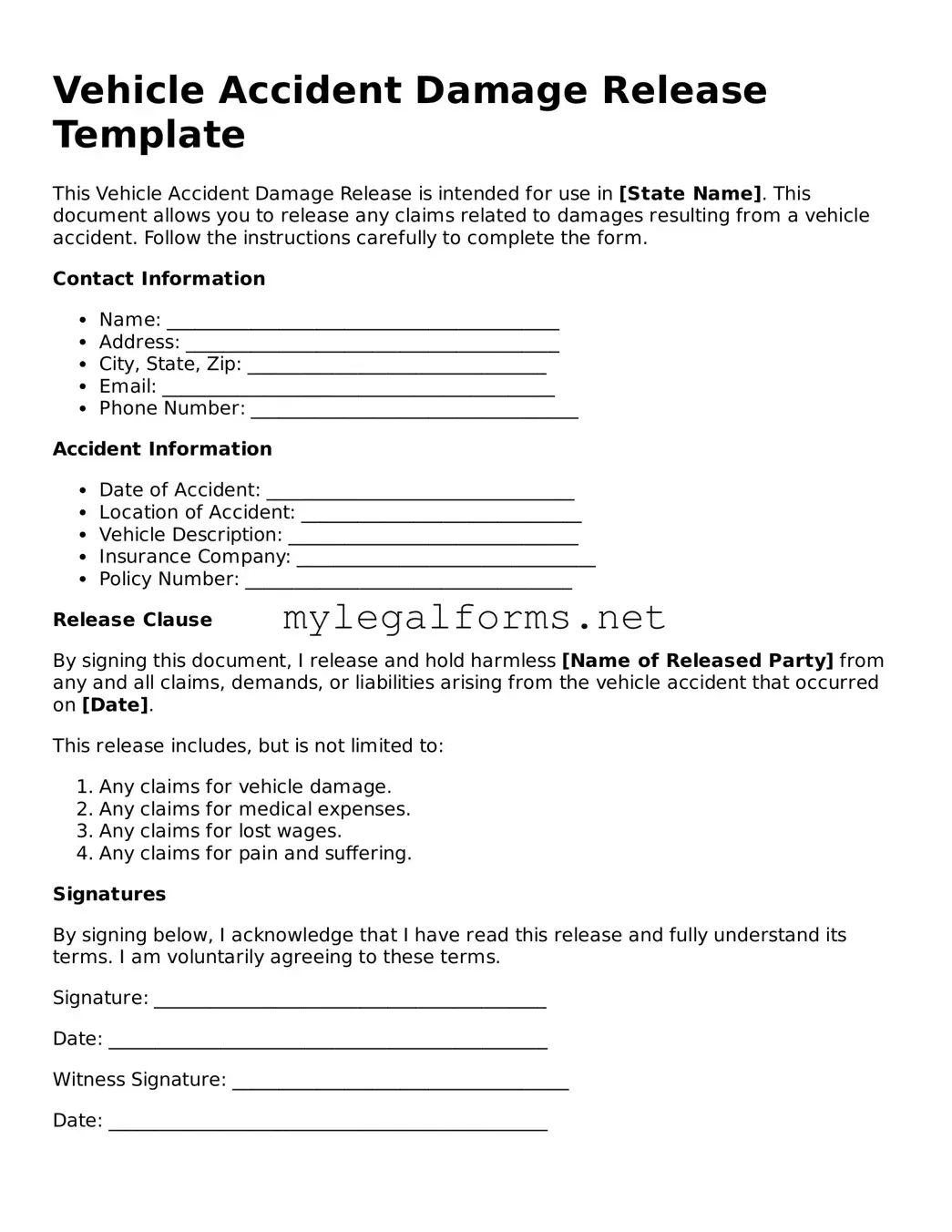Vehicle Accident Damage Release Template
This Vehicle Accident Damage Release is intended for use in [State Name]. This document allows you to release any claims related to damages resulting from a vehicle accident. Follow the instructions carefully to complete the form.
Contact Information
- Name: __________________________________________
- Address: ________________________________________
- City, State, Zip: ________________________________
- Email: __________________________________________
- Phone Number: ___________________________________
Accident Information
- Date of Accident: _________________________________
- Location of Accident: ______________________________
- Vehicle Description: _______________________________
- Insurance Company: ________________________________
- Policy Number: ___________________________________
Release Clause
By signing this document, I release and hold harmless [Name of Released Party] from any and all claims, demands, or liabilities arising from the vehicle accident that occurred on [Date].
This release includes, but is not limited to:
- Any claims for vehicle damage.
- Any claims for medical expenses.
- Any claims for lost wages.
- Any claims for pain and suffering.
Signatures
By signing below, I acknowledge that I have read this release and fully understand its terms. I am voluntarily agreeing to these terms.
Signature: __________________________________________
Date: _______________________________________________
Witness Signature: ____________________________________
Date: _______________________________________________
For any questions about this release or its implementation according to [State Name] laws, consider consulting a legal professional.
